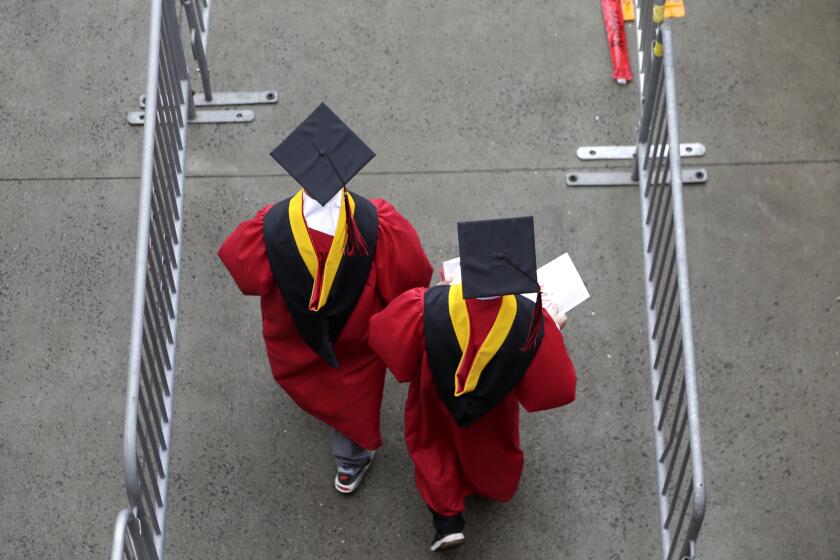The Times gets a wrong number
California’s hands-free cellphone law has been a lifesaver. According to California Highway Patrol statistics, the law has helped reduce the number of annual fatalities on our roads by 700 and collisions by between 75,000 and 100,000. CHP data also show that traffic fatalities and crashes in California were each down by roughly 20% in the first six months since the law took effect on July 1, 2008, compared with the same six-month periods of previous years.
These statistics are all the more compelling when you consider the steady increase in the number of licensed drivers in California over the last several years, and the fact that there are more than double the number of cellphones out there today than there were just a decade ago.
Although compliance with the new law has been good, it certainly could be better. So I’ve written legislation, SB 1475, to increase the base fine for a hands-free violation from $20 to $50, in an effort to encourage even more drivers to follow the law.
The Times, which opposes raising the fines, wrote in its Feb. 25 editorial that the legislation may be “more about raising money than improving public safety.” Nothing could be further from the truth.
Let’s be clear: Traffic tickets should never be issued to raise revenue. The goal here is to increase compliance, reduce the number of tickets and allow for more drivers to make it home safe and sound.
Indeed, the $50 fine I’ve proposed for a first offense is modest compared with other traffic infractions on the books. Under existing law, motorists who litter while driving are fined $100; the same penalty applies to riding in the trunk of your car or sliding into the carpool lane when you shouldn’t. I’m proposing a fine of just half that amount for a behavior far more serious in terms of public safety.
Significantly, the proposed legislation also provides that a violation of the hands-free law would result in a “point” added to a motorist’s driving record -- a step the CHP believes would be a real deterrent. And a portion of the fine ($10 per ticket) would go toward an education program, as public awareness and vigorous enforcement are keys to increasing compliance.
The Times correctly makes the case that even a hands-free conservation in the driver’s seat is a distraction. But The Times neglects to mention a 2008 study by the highly regarded Public Policy Institute of California that shows existing hands-free laws are working.
The PPIC study evaluated three states -- New York, New Jersey and Connecticut -- and the District of Columbia, all of which were early adopters of hands-free legislation. In every jurisdiction over every period of time, the PPIC identified significant reductions in traffic fatalities. Based on that data, the PPIC study predicted that California’s roads would see 300 to 900 fewer fatalities a year as a consequence of the state’s then-impending hands-free law. This projection was right on the money.
So studies differ on the efficacy of laws such as California’s, but there’s one thing we know for sure: There isn’t a study in the world that says you’re safer clutching a cell phone to your ear while you’re distracted by a cellphone conversation than you are when you have both hands free to be on the wheel.
Every day in California, a couple of folks who otherwise wouldn’t have made it through the day are sitting down to dinner with their families. Substantially more avoid the pain, injury and cost associated with nonfatal accidents. That ought to be worth a moment of care, caution and common sense by drivers.
And if a $50 ticket can serve as a more potent deterrent and save a few more lives, it will make a good law even better.
Sen. Joe Simitian (D-Palo Alto), who represents the 11th state Senate district, is the author of California’s hands-free and no-texting laws.
More to Read
A cure for the common opinion
Get thought-provoking perspectives with our weekly newsletter.
You may occasionally receive promotional content from the Los Angeles Times.










